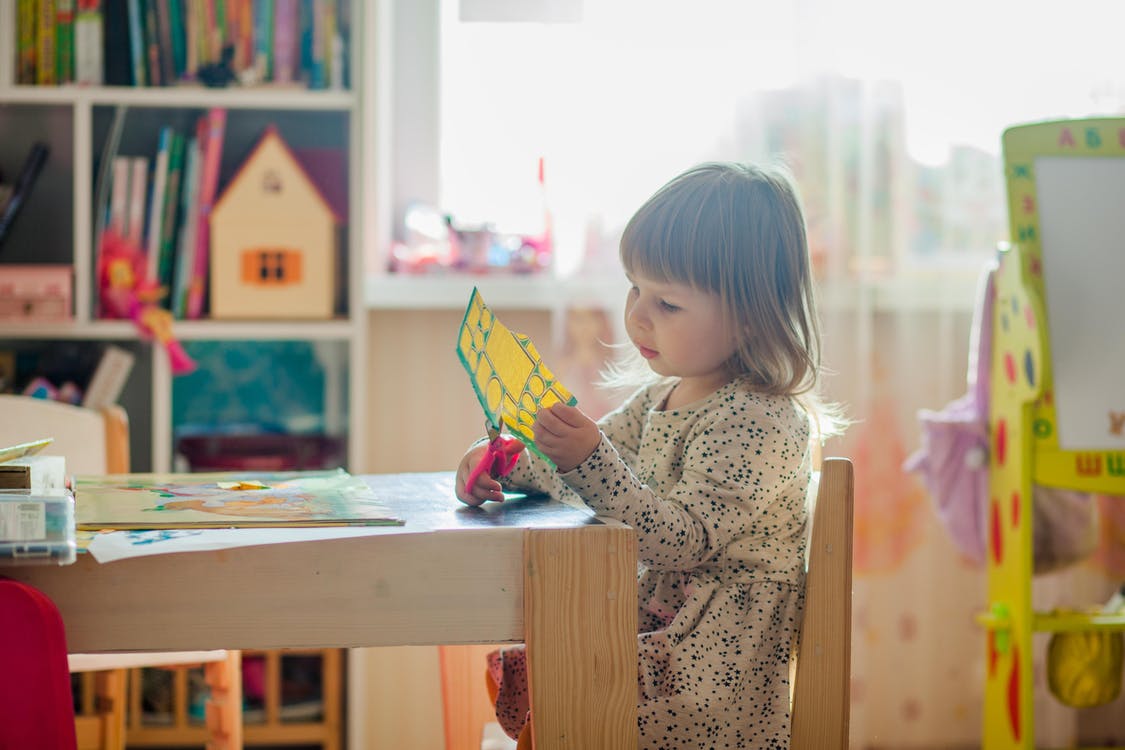Rethinking Your Classroom Arrangement

With the new school year quickly approaching, early childhood educators everywhere are planning how they are going to set up their classrooms. What worked last year may not work again this year, and it is important that we stay diligent on how we want to organize a child’s space.
Children in preschool should be given a variety of hands-on learning activities and be encouraged to learn through play. Young children learn best when they are engaged in active learning activities and by exploring their environment. Therefore many preschool teachers and programs choose to set up their classrooms in a center-based way.
Things to think about when planning the layout of your preschool classroom
- How big your classroom is
How many learning centers and materials you can put in your classroom will depend on how much space you have to work with. If you have a small classroom, think about options that can move or be used for more than one thing. Keep in mind that even a small classroom can be a great place to learn if the right things are set up.
- How many children are going to be enrolled?
How you set up your classroom will be directly affected by how many children you are in charge of. If you need to fit more children into the space, you'll have to cut back on learning centers and activity areas or find other ways to use them in your classroom.
- What kind of classroom space you want to add
It's important to set up a place in the classroom where you and all of the children can sit down and learn together, whether you want it to be a sitting area, a desk area, or a combination of the two. Make sure that the layout of your classroom includes a place for you to work.
- How many learning centers you want to have
Make this choice based on how much space you have after you've planned out your classroom and teacher's station. If you only have space for a few learning centers, choose the ones that will help your children the most.
- How much room each learning center needs
Most of your learning centers should be big enough for 3–4 children. Depending on your space, you may have to limit some centers, like the reading area to only one to two children.
- Any sinks, windows, closets, or other permanent parts of the classroom
To save space, it's always best to use the permanent things that are already in your classroom. If you have a sink, try to put messy activities and learning centers (like painting, sand and water, etc.) near it. A science area near windows is also a great way to get children to observe nature and the weather in real time.
- The amount of noise in learning centers and other classrooms
When you plan the layout of your classroom, it's important to think about how loud each space will be. Try to keep places with low noise levels close to each other and far away from places with a lot of noise.
- The furniture you'll need for the classroom and the learning centers
Furniture can either take up more room than necessary or help you make the most of the space in your classroom. Plan to use furniture as dividers between learning centers and to use different types of furniture to improve the layout of your classroom.
Want to learn more? H&H Child Care Training offers both online and instructor-led courses on Classroom Designers for preschool teachers and Playful Spaces for Infants &Toddlers.
Check out our fill list of courses here and sign up for your next training today!
- Classroom Setup for Child Care
- CDA Bridge Bundle: Family Child Care without Portfolio Review
- 45 Hour Preschool Methods and Materials
- 45 Hour School Age Methods and Materials
- Asthma, Allergy and Anaphylaxis Prevention and Management Training for Early Education Providers
- CDA Bridge Bundle: Infant/Toddler without Portfolio Review
- CDA Bridge Bundle: Preschool without Portfolio Review
- Formats For Setting Up Parent Contracts
- Effective and Engaging Classroom and Home Daycare Room Arrangements
- Mapping Out Spaces
- Rethinking Your Classroom Arrangement
- Active Supervision: The Only Way to Care for Children
- Classroom Arrangement
- Tips for designing your early childhood classroom space
- How to Start a Daycare with Children with Special Needs
- How to Make Your Circle Time More Inclusive for All Learners
- Trauma-Informed Care: Why Your Classroom Isn’t Complete Without a Little Extra Empathy
- Why Safe Sleep Training Matters: Preventing SIDS and Promoting Infant Well-Being
- Safe Sleep Training for Infants: Prevent SIDS
- SIDS Awareness: Safe Sleep Training for New Parents
- 🖍️Ready, Set, Set Up! A Daycare Teacher’s Guide to a Dreamy Classroom
- Best Practices for Managing a Child Care Classroom or Program
- How to Handle Challenging Behaviors in Early Childhood Settings